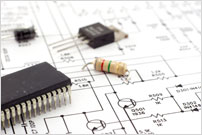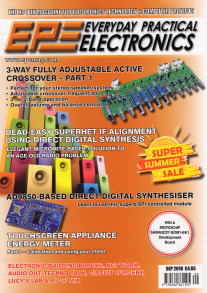September 2018 Issue
A summary of this month's contents.
3-Way Stereo Active Crossover (Part 1)
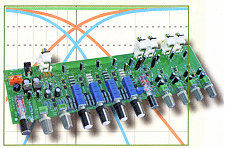
This stereo 3-way active crossover is not only a fantastic tool for loudspeaker design and development, but it can also be integrated into a 2-way or 3-way (powered) loudspeaker in its own right. The crossover points and levels are fully adjustable and overall volume and balance controls are incorporated. Optional bass limiter.

In Part One this month, the circuit description is provided, with constructional details following next month.
![]() Surface mount components are used. Good soldering skills are needed to complete this project successfuly.
Surface mount components are used. Good soldering skills are needed to complete this project successfuly.
Dead-Easy Superhet IF Alignment using DDS

This project is based on the touch-screen Micromite DDS Signal generator project (see April 2018 issue). It makes aligning the IF stage of superhets – whether valve (vacuum tube) or transistorised – a real snap!
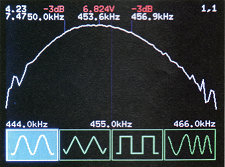
It also enables examination of the IF stage bandwidth, which gives a good indication of the set’s selectivity, as well as the shape of the IF curve. Its interactive colour touch-screen module makes for simple, intuitive use.
Touchscreen Appliance Energy Meter (Part 3)
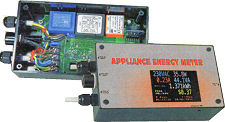
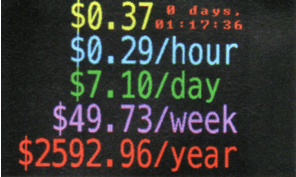
Previously we described the design and construction of this sophisticated piece of test and measurement equipment. This final part describes some programming considerations and how to calibrate and use it.
Ultra-Low-Voltage Mini LED Flasher
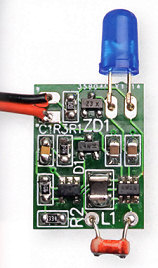 Using just a handful of components on a tiny (15 x 19mm) printed circuit board, this ingenious circuit can deliver a high-power flash yet it will run from a single 1.5V cell. It’s ideal for toys and models, railroad setups or warning signals and consumes very little power when the LED is off.
Using just a handful of components on a tiny (15 x 19mm) printed circuit board, this ingenious circuit can deliver a high-power flash yet it will run from a single 1.5V cell. It’s ideal for toys and models, railroad setups or warning signals and consumes very little power when the LED is off.
Ambient light monitoring can switch the LED off during the day. Supply voltage 0.8 – 3.3V, up to 50 days battery life (alkaline AA), variable duty cycle.
![]() Experience useful – Surface mount design.
Experience useful – Surface mount design.
Using Cheap Asian Electronic Modules – Part 9
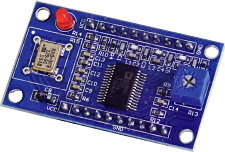
The AD9850 DDS Module - In the April 2018 issue we covered the AD9833 Direct Digital Synthesis (DDS) chip. This month we’re looking at its big brother, the AD9850 which typically can generate sinewaves to 40MHz controlled via an SPI serial interface.
Audio Out – Analogue Synthesis - Part 2
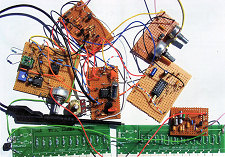
Continuing an in-depth exploration of the intricacies of analogue synthesiser circuitry and hardware, our expert demonstrates his hands-on knowledge of the operating principles of ‘synths’ in this class-leading series.
Electronic Building Blocks
More practical examples to try based on very cheap imported modules – a waterproof voltmeter, an LED display temperature switch and an ATX-based benchtop PSU adaptor.
Also in this issue:
- Lucy’s Lab – the true meaning of ‘Wi-Fi’
- Net Work – How Google’s Chromecast lets you enjoy YouTube (and more) on the big screen
- PIC n’ MIX - PICMeter Part 1 – The start of a new project, the PICMeter multimeter. Voltmeter principles are introduced this month.
- Circuit Surgery – our in-house ‘surgeon’ explores differentiator circuitry and offers LTSpice simulator files too. LTSpice files now available for download - see above.
- Techno Talk –African drumbeat messaging is more sophisticated than you might think.
Next month
6GHz+ Touchscreen Frequency & Period Counter (Part 1); 3-Way Fully Adjustable Stereo Active Crossover for Loudspeakers (Part 2); Low-Cost Electronic Modules (Part 10); PIC n' MIX.
Contents may be subject to change.
EPE is packed with practical electronics projects and theory for the hobbyist. You can order a printed copy of EPE for delivery to your door (worldwide), or try the PDF Version (needs Adobe Reader for Windows), or the Pocketmags for your mobile device. Subscribe now!
Source Code File 0918.zip
(AD9850, Circuit Surgery)
- now includes Circuit Surgery LTSpice files
Starting this month:
Circuit Surgery Downloads
Our writer Ian Bell now offers readers a free download of LTSpice files to accompany his article. They are included in this month's file download (see above).
![]() The .asc files are schematics these are essential for running a simulation. The .plt are plot settings if a .plt files is present in the folder (same file name .asc with .plt extension) then LTSpice will use them to set up the plots for displaying simulation results. You can also load one via the menus.
The .asc files are schematics these are essential for running a simulation. The .plt are plot settings if a .plt files is present in the folder (same file name .asc with .plt extension) then LTSpice will use them to set up the plots for displaying simulation results. You can also load one via the menus.
If you just have the schematic you will have to manually add plot planes and traces (graph lines) and get up the graph format in order to see the results. Actually, it's a bit more complex than that as LTSpice will only honour the plot settings if it can (e.g. the plot window may be too small the display the set axis steps). Both files are text files, but are generated by LTSpice, so not normally written by humans.
- Ian Bell.
 Download Help
Download Help
Can't find what you're looking for? Our Library Help Page offers extensive information and help with downloading files.

The September 2008 issue included an Ultrasonic Bat Eavesdropper, a Magnetic Cartridge Pre-amp, a Car Speedo Corrector and an S-Video to Composite Video Converter.
PCB artwork
As from July 2013 issue PCB artwork is available free to subscribers only.
Non-subscribers may purchase artwork files for a nominal sum. Please contact our Orders Dept for information or to place an order.
EPE Printed Circuit Boards
We can supply ready-made printed circuit boards (8-digit order codes) to the original design specification via mail order or from our Online Shop.

